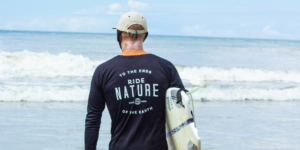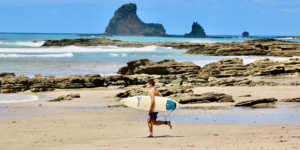Surfing is an exhilarating sport that allows you to connect with nature in a unique way. Whether you’re a seasoned surfer or a complete beginner, having the right gear is necessary to ensure a fun and safe experience. In this blog post, we’ll discuss the essential surfing gear you’ll need for a day at the beach. From surfboards to sunscreen, we’ve got you covered. So, let’s dive in and explore the ultimate surfing gear checklist that will have you ready to ride the waves in no time!
The Surfboard
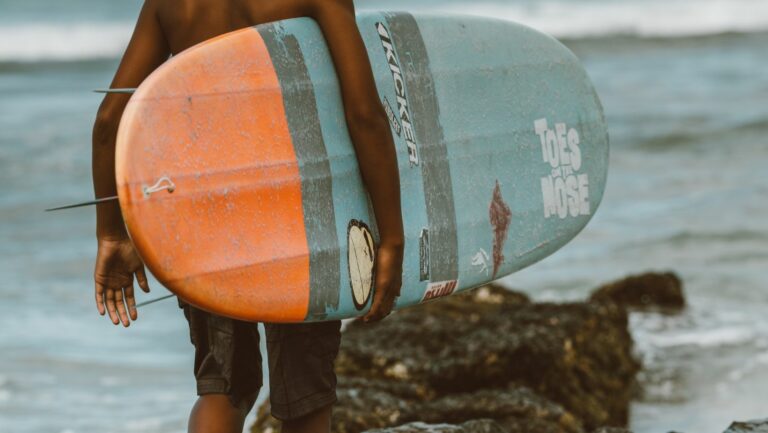
Choosing the Right Surfboard
The surfboard is the most important piece of equipment for any surfer. There are various types of surfboards to choose from, and the right one for you will depend on your skill level, the type of waves you’ll be riding, and your personal preferences.
- Beginners should opt for a larger, more stable board. Longboards and foam boards are great options for those just starting out, as they provide more stability and help with catching waves.
- Intermediate surfers may prefer a shorter board that allows for more maneuverability. A funboard or hybrid board could be a good choice for those looking to progress their skills.
- Advanced surfers will typically go for a high-performance shortboard that enables them to carve, turn, and perform aerial maneuvers.
Surfboard Accessories
There are several accessories that you’ll want to consider for your surfboard:
- Leash: A leash connects your surfboard to your ankle, ensuring that you won’t lose it when you wipe out. Choose a leash that’s roughly the same length as your board for the best results.
- Fins: Fins provide stability and control while surfing. There are various options to choose from, including removable and fixed fins, as well as different materials like plastic or fiberglass.
- Wax: Surfboard wax is essential for providing grip on your board. Apply wax to the deck of your surfboard before each session to ensure you don’t slip off.
Wetsuit and Rash Guard
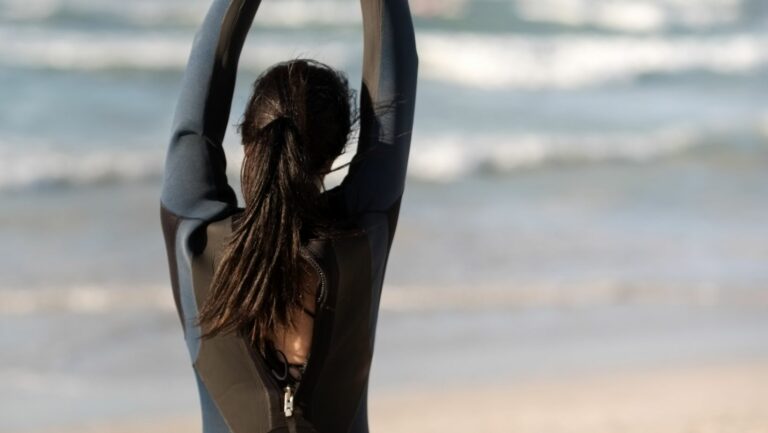
Wetsuit
A wetsuit is designed to keep you warm in cold water by trapping a thin layer of water between your body and the suit, which is then warmed by your body heat. The thickness of the wetsuit you’ll need depends on the water temperature of the area you’ll be surfing in. Generally, a 3/2mm wetsuit is suitable for water temperatures between 58-68°F (14-20°C), while a 4/3mm wetsuit is better for colder waters.
Rash Guard
Rash guards are lightweight, quick-drying shirts made of materials like polyester or spandex that provide UV protection and help prevent chafing or skin irritation from your wetsuit or surfboard. They can be worn alone in warmer water or under your wetsuit for added comfort and protection.
Sun Protection
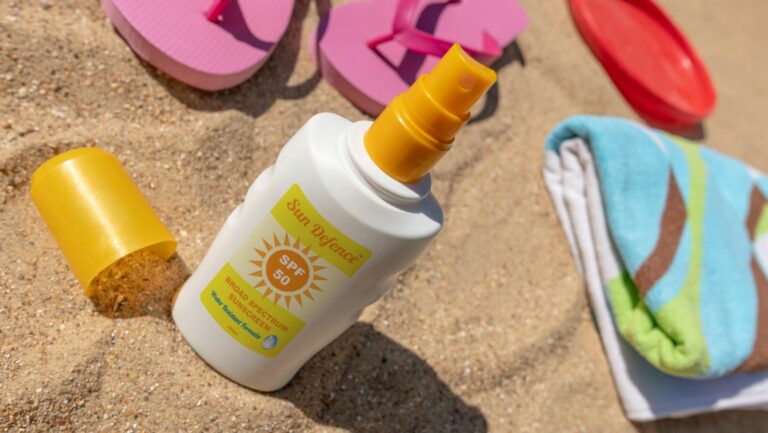
Sun protection is crucial when spending long hours at the beach. Be sure to pack the following essentials:
- Sunscreen: Choose a broad-spectrum, water-resistant sunscreen with an SPF of 30 or higher. Remember to reapply regularly, especially after getting out of the water.
- Sunglasses: Polarized sunglasses will protect your eyes from UV rays and reduce glare. Opt for a pair with a strap to prevent them from falling off in the water.
- Hat: A wide-brimmed hat or cap will provide added sun protection for your face and neck.
Beach Essentials
Don’t forget these beach essentials for a successful surfing session:
- Beach towel or blanket: A towel or blanket is a must-have for drying off and relaxing between sessions.
- Water bottle: Staying hydrated is crucial during long days in the sun. Bring a reusable water bottle and fill it up throughout the day.
- Snacks: Pack some high-energy, non-perishable snacks like granola bars, trail mix, or fruit to keep your energy levels up.
- First aid kit: Accidents can happen, so it’s always a good idea to have a small first aid kit on hand with items like band-aids, tweezers, and antiseptic wipes.
Surfing Safety Gear
Safety should always be a top priority when surfing. Consider bringing the following safety gear:
- Life vest: If you’re not a strong swimmer or you’re surfing in rough conditions, a life vest can provide added buoyancy and safety.
- Reef booties: Sharp rocks and reefs can cause injuries to your feet. Wearing reef booties will protect your feet and provide additional grip on your surfboard.
- Earplugs: Surfer’s ear is a common condition caused by cold water and wind exposure. Wearing earplugs can help prevent this painful issue.
Surfing is an incredible sport that can provide endless enjoyment and an adrenaline rush like no other. However, being prepared with the right gear is essential to ensure a safe and enjoyable experience. With this comprehensive surfing gear checklist, you’ll be well-equipped for a fantastic day at the beach, catching waves and soaking up the sun. Now, all that’s left to do is grab your gear, head to the beach, and ride those waves!


